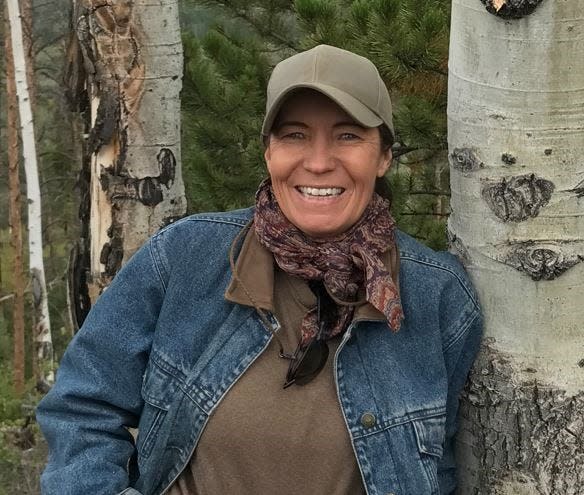Bighorn sheep are the trojan horse of the anti-grazing activists
In response to Joe Lewandowsky's opinion piece, "Wild Bighorns in peril in Colorado, Rocky Mountain West," I would like to share some facts ignored in the emotional rhetoric and scare tactics employed by anti-grazing activists.
Respiratory disease in bighorn sheep is a significant challenge to maintaining healthy bighorn herds. At best, it’s disingenuous to portray the cause of respiratory disease in bighorns solely as domestic sheep and at its worst, it’s a damaging setback to the health and viability of both bighorns and domestic sheep to ignore the fact that the issue is much more complex than a singular cause.

The "Mycoplasmas: Molecular biology, Pathogenicity, and Strategies for Control" textbook states: “assumptions about restricted host range of mycoplasmas, based on the host from which they were first or frequently isolated, are usually made in the context of nearly complete absence of representative sampling of the vast majority of potential hosts.” Furthermore, bighorn research relies upon incomplete genetic sequencing to make assumptions about potential host strains of mycoplasma ovipneumoniae (also known as “M ovi”).
Lewandowski gives the impression that any contact with domestic sheep is always fatal. This misconception has its roots in “pen” studies that forced wild bighorn sheep to commingle with domestic sheep, with resulting high mortality rates for bighorns. The inherent problem with this is that forced contact between the two species is not indicative of open range grazing.
Rooted even deeper than the “pen” studies agenda-driven extrapolation to end domestic sheep grazing, is the historical abundance of bighorns in North America. With today’s technology (aerial flights, trail cams, etc.) wild game agencies are hard-pressed to make accurate counts of wildlife populations. As such, historical observations from a century ago are interesting but cannot be relied upon as fact; and in the same line of thought, speculation and assumptions about the historic decline of bighorns cannot be relied upon as fact.
While Lewandowski concocts “the few ‘woolgrowers’ in Colorado hold inordinate political power because their agricultural status is somehow sacrosanct,” I would offer that the wool growers have been able to refute much of the hysteria and manipulation of data regarding bighorns and domestics; federal lands are still multiple-use; and Americans still cherish domestic food and fiber production as well as wildlife and habitat.
Respiratory disease in bighorn sheep is very serious, but here are some facts that are ignored by Lewandowski. Direct contact between bighorn sheep and domestic sheep during routine grazing (open range or pasture grazing), may or may not result in the transfer of pathogens, which may or may not result in the subsequent development of respiratory disease in bighorn sheep, which may or may not result in a mortality event for bighorns. The specific strain of mycoplasma ovipneumoniae, the amount and duration of pathogen exposure, the health (nutrition, parasite loads, etc.), environmental stressors (weather, predation, etc.) of the individual bighorn sheep exposed to contact are all unknown quantities when it comes to the potential development of respiratory disease in bighorns.
There are more unknowns about respiratory disease events in bighorn sheep than there are known facts. Additionally, despite decades of the narrative that M ovi is solely found in domestic sheep, we now know that M ovi is also present in other species including mule deer, white-tailed deer, bison, moose, caribou, antelope and thin horn sheep. Even if domestic sheep are removed from areas that include bighorn sheep, various strains of M ovi still exist in the environment, as does the potential for other wildlife species to serve as a reservoir, and vector for pathogen transmission. This is yet another complex and unknown impact to bighorn sheep herd health. As Lewandowsky states, “the evidence is incontrovertible” only if you steadfastly refuse to acknowledge that respiratory disease in bighorn sheep is a poly-microbial, multi-factorial event.
Bighorn sheep are the trojan horse of the anti-grazing activists, a sad fact that draws attention and resources away from comprehensive research and management to help bighorns thrive.
Bonnie Brown-Eddy is the executive director of the Colorado Wool Growers Association.
This article originally appeared on Fort Collins Coloradoan: Bighorn sheep are the trojan horse of the anti-grazing activists
